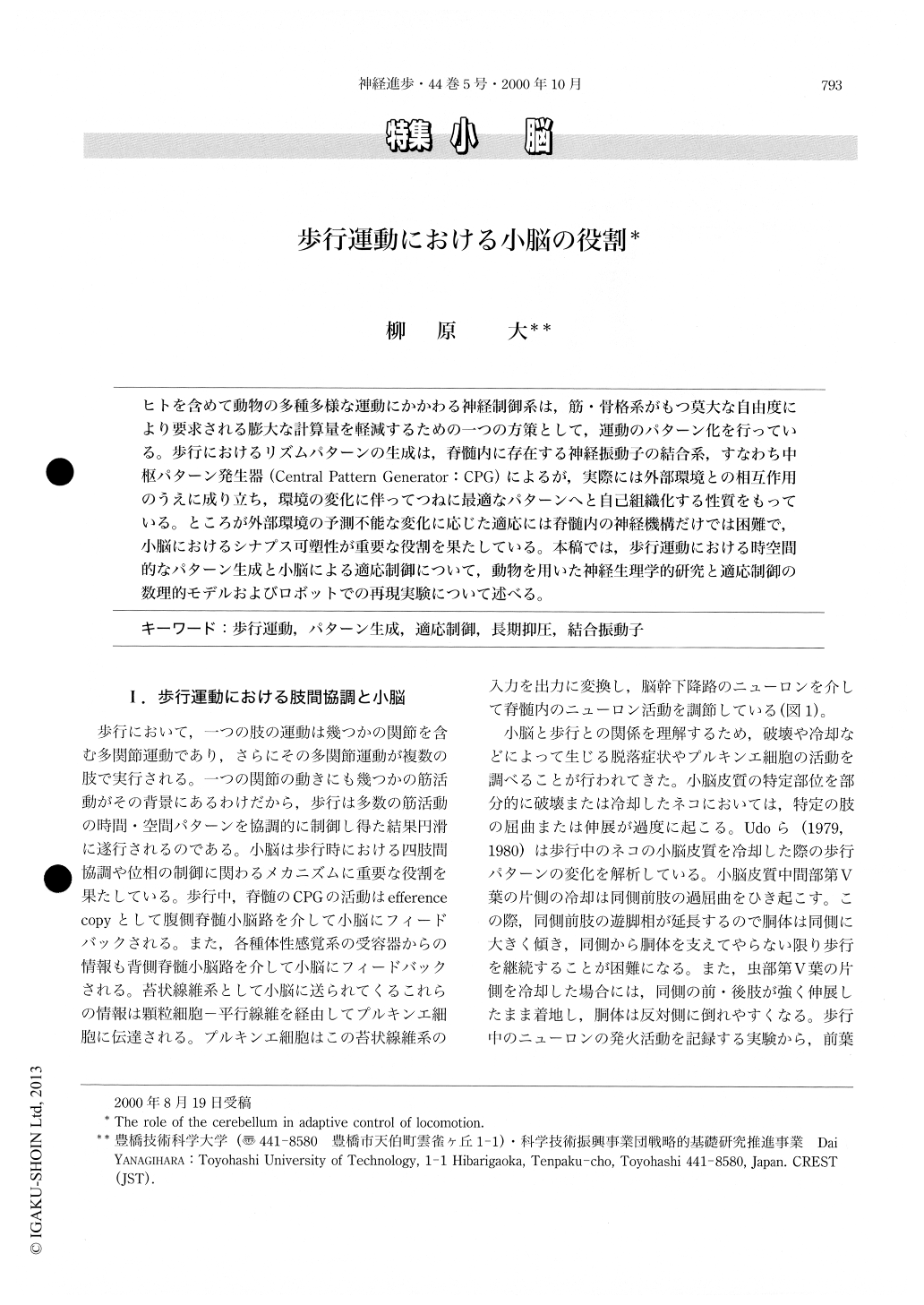Japanese
English
- 有料閲覧
- Abstract 文献概要
- 1ページ目 Look Inside
ヒトを含めて動物の多種多様な運動にかかわる神経制御系は,筋・骨格系がもつ莫大な自由度により要求される膨大な計算量を軽減するための一つの方策として,運動のパターン化を行っている。歩行におけるリズムパターンの生成は,脊髄内に存在する神経振動子の結合系,すなわち中枢パターン発生器(Central Pattem Generator:CPG)によるが,実際には外部環境との相互作用のうえに成り立ち,環境の変化に伴ってつねに最適なパターンへと自己組織化する性質をもっている。ところが外部環境の予測不能な変化に応じた適応には脊髄内の神経機構だけでは困難で,小脳におけるシナプス可塑性が重要な役割を果たしている。本稿では,歩行運動における時空間的なパターン生成と小脳による適応制御について,動物を用いた神経生理学的研究と適応制御の数理的モデルおよびロボットでの再現実験について述べる。
To perform smooth and stable locomotion, animals coordinate not only parts of a limb, but also different limbs. The dynamics of coordination is modified according to changes of external conditions due to obstacles or unexpected perturbation. Formation of the dynamics of the coordinated pattern in space-time is viewed as an important process of motor learning. How is the dynamics of locomotion pattern adjusted to the changes of the external conditions by motor learning ? During this motor learning, what happens in the brain ?

Copyright © 2000, Igaku-Shoin Ltd. All rights reserved.


